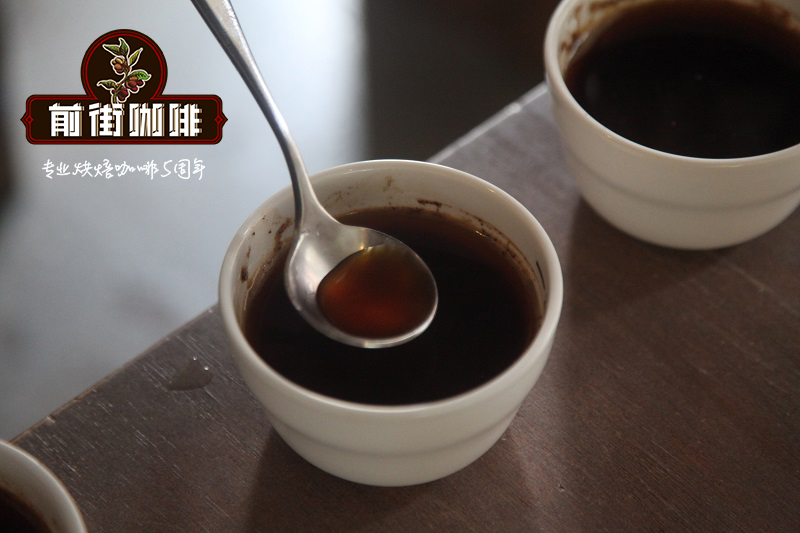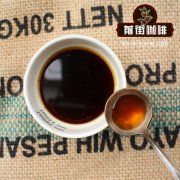Kenyan coffee bean flavor Kenyan coffee grading method Kenyan coffee

Professional coffee knowledge exchange more coffee bean information please follow the coffee workshop (Wechat official account cafe_style)
Located in Kenya below the equator of East Africa, the coffee beans planted are high-quality Arabica, thick and round in meat, and divided into seven grades according to the size of the beans, and the taste is divided into six grades from top to bottom. "Kenya AA" is highly praised and respected in the taste recommendation, with a slightly sour and thick fragrance, which is very popular among Europeans, especially in Britain. Kenyan coffee has surpassed Costa Rican coffee to become one of the most popular coffee.
When it comes to Kenya in the field of coffee expertise, SL34 and SL28 must not be omitted, which is a unique naming method in Kenya. Since the 1930s, the Kenyan government has cooperated with the internationally renowned Scott Laboratory (SL) to develop a series of variety improvement programs with French missionary French Mission from Tanzania and Mocha from Yemen, hoping to cultivate excellent varieties with drought resistance and high yield. Although the varieties numbered # 28 and # 34 have very little yield, they are particularly adapted to the special climate at high altitude in Kenya (low temperature, long drought, rainstorm), and develop a strong and rich special flavor, and finally become the familiar Kenyan coffee.
Kenya's boutique coffee industry is different from the general, mostly in the form of a combination of small farmers, wet treatment plants and cooperatives. Farmers will send the harvested coffee cherries to nearby processing plants or cooperatives in the shortest possible time. At the same time, cooperatives also regularly send staff to tutor local farmers to ensure that each producer has professional planting skills to maintain the quality of coffee.
The grading system of raw coffee beans in Kenya is established by the government as a whole to manage the quality and guide coffee farmers. According to the standards of particle size, weight, shape and appearance, it is divided into: AA, AB, PB, C, TT, T, E, MH, ML. AA and PB are the high-quality coffee beans with low proportion of defects and flavor tut.
Coffee grading in Kenya
E refers to the elephant, but not the elephant bean species in the breed. Generally speaking, there are two seeds in a fruit, affixed face to face, so there will be a flat side, called flat beans, mother beans or double beans. E is a bean in which two seeds stick together in the process of growing up and become oversized. A small amount is a naturally occurring variation.
The hole of AA screen is about 7.20mm, the price of this grade is better.
The filter size of AB An is 6.80mm and that of B is 6.20mm. These two are sold together, so they are called AB. In a harvest, most of the coffee beans will be concentrated in this grade.
PB is called Peaberry in English and small round beans in Taiwan, or public beans or single peas, relative to ordinary flat beans. It is rare to get small and round beans because there is only one seed in the fruit. The effect on flavor is inconclusive, and some people like it so much that PB will be singled out for sale.
C the hole size is 4.8 mi 5.6 mm, which can be regarded as a small grain of beans.
TT is usually a defective bean that falls to this level. Cry.
From T to this level, there are usually only crumbs, defective beans, and small beans less than 4.8 mm.
Beans of very poor quality, such as MH/ML overcooked and dropped on the ground, will not be exported.
Commonly seen as AA+, AA++, AA Top, AB+, is the trader's own rating, not in the official system of Kenya. Different trade associations have different definitions, so just refer to it.
Qianjie coffee also has beans from Kenya AA, Kenya asali and Karoguto are all from Kenya AA. It is recommended that the hand brewing parameters are 90-92 ℃, the ratio of powder to water is 1:15, and the brewing time is two minutes and 20 seconds. The entrance is bright sour virgin fruit, honey-like sweetness.
Qianjie coffee: Guangzhou bakery, the store is small but a variety of beans, you can find a variety of unknown beans, but also provide online store services. Https://shop104210103.taobao.com
Important Notice :
前街咖啡 FrontStreet Coffee has moved to new addredd:
FrontStreet Coffee Address: 315,Donghua East Road,GuangZhou
Tel:020 38364473
- Prev

Classification of Kenyan coffee how to drink Kenyan coffee? Characteristics of Kenyan aa Coffee
Professional coffee knowledge exchange more coffee bean information Please follow the coffee workshop (Wechat official account cafe_style) Coffee has gone through five steps: planting, harvesting, processing, roasting and extraction, from the crops in the mountains to the drinks in our hands. All the classifications we have seen so far are basically based on different factors / methods in these steps.
- Next

Kenyan coffee flavor Kenyan aa coffee characteristics Kenyan coffee grade classification
Professional coffee knowledge exchange more coffee bean information please follow the coffee workshop (Wechat official account cafe_style) Kenya is a country that produces fine coffee. Only the traditional Arabica tree species were introduced from Britain in 1900. It was not until 1950 that the best bourbon variants of SL28 and SL34 in Kenya appeared, and most coffee beans are carried out by the Kenya Coffee Authority.
Related
- Beginners will see the "Coffee pull flower" guide!
- What is the difference between ice blog purified milk and ordinary milk coffee?
- Why is the Philippines the largest producer of crops in Liberia?
- For coffee extraction, should the fine powder be retained?
- How does extracted espresso fill pressed powder? How much strength does it take to press the powder?
- How to make jasmine cold extract coffee? Is the jasmine + latte good?
- Will this little toy really make the coffee taste better? How does Lily Drip affect coffee extraction?
- Will the action of slapping the filter cup also affect coffee extraction?
- What's the difference between powder-to-water ratio and powder-to-liquid ratio?
- What is the Ethiopian local species? What does it have to do with Heirloom native species?

